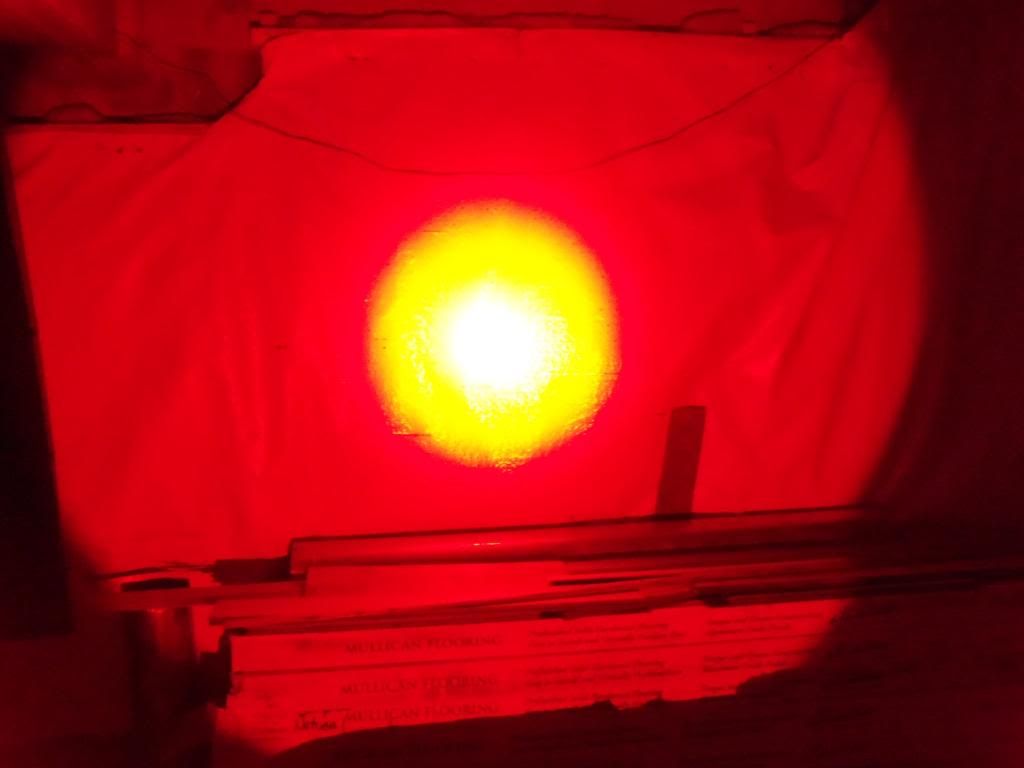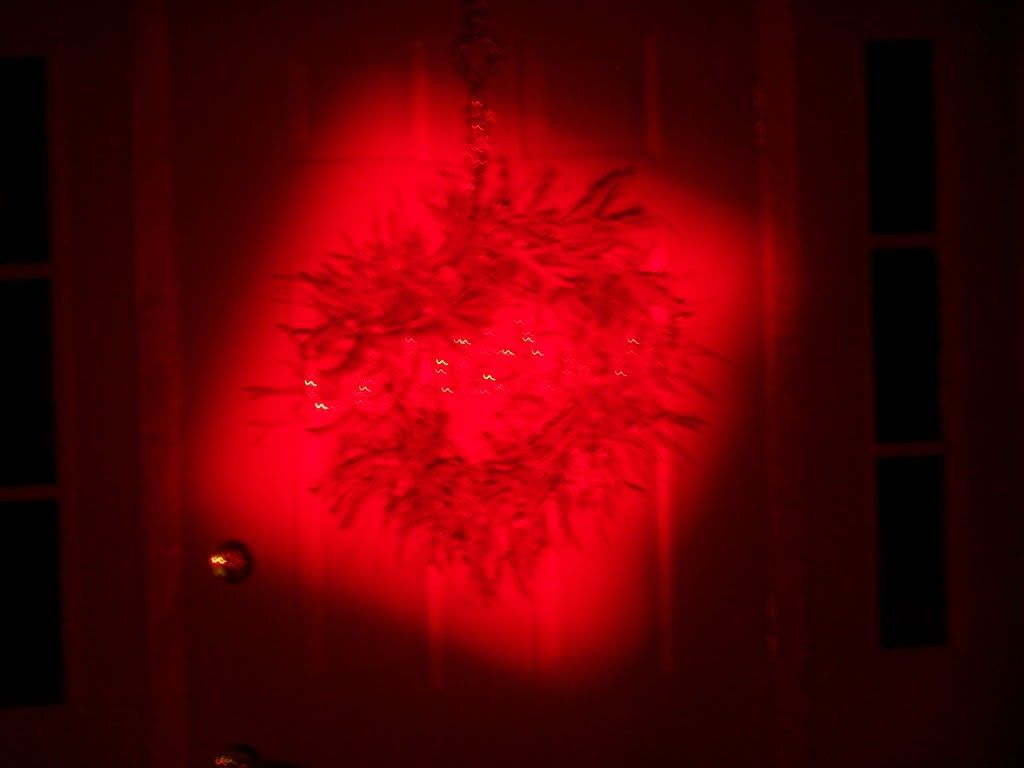Originally Posted By: BUCKWHEAT
Hi Kevind43,
I am Ernie the seller of the Carnivore 5. I do not post information about
my lights and tripod predator hunting stands because I do not have the size
business to afford being a sponsor at this point. However, since you asked
directly about my light, I believe it is acceptable to post a response to
your question.
I am always a bit cautious when directly comparing Lux readings and hunting
uses because they can be two different things. A single red led generates
around 250 LM,s But you can take that 250lm,s and focus that light and it
will give you a hi LUX reading. Kind of like a magnifying glass were you
can focus the sun light so tight it can start a fire. But you would have a
beam that would shine far. But it would be small in diameter. If you take
that same 250 LM,s and try an spread it out it will drop LUX real fast.
I set out to create a light that had both a long reach as well as a wide
through to quickly pick up critters in a scope faster than narrow beams.
So here is a question, what is the difference in a light that uses 5 250
LM LEDs and there lux
Well for one thing you can only use a fixed lens but you are getting 1200
1200 LM,s
You will get a much higher LUX reading on a focused led. But a 5 led light
will put out 1200 LM,s of fixed light. The lux reading will be less but
you will see a lot more area lit up and see very far all at the same time.
Also when you lose the spill on a tight beam you lose the ability to hide
behind the light. Anything not directly in the tight beam of light will now
be able to see behind the light.
So there is a lot more to running lights for hunting then a light meter.
Picking lights is a hard thing to do and each has there own use. Size and
weight even comes into play. The type of hunting method comes into play.
If you think you can pick lights form people that aggressively sell lights
good luck! Everybody thinks they have the best.
I would say take your time picking a light and hunt with others and test
there lights.
Ernie
ernie,
thank you for a fair and honest and courteous response. i started hunting at night a few years ago and bought a few of the lights currently on the market and wasn't impressed with any of them. i know what i need and there isn't anything on the market that fits my needs in a price range that i could afford. thats when i started building my own lights. that said when someone claims that this light or that is the farthest throwing or beats the pants off this other light i want a quantitative analysis of how they arrived at that conclusion. the only way to do that is with a light meter.
Often one can read about "lux" or "lux@1m" to describe 'spot brightness' or throw.
this is a quote from dr jones,
lux is the unit of illuminance E, that is the luminous flux F (lumens) per area A falling onto a surface. It's more a unit for a whole lighting setup onto a target than for a light source itself.
With a single light source like a flashlight, the illuminance E drops with increasing distance d, described by the inverse square law: E is proportional to 1/d² (actually that's an approximation which gets more accurate with increasing distance). If one now multiplies that illuminance E by the squared distance, E*d² gives a constant value, which is independent of the distance and only depends on the flashlight itself. This is another physical quantity, the luminous intensity I, or, measured at the spot, the spot luminous intensity I, or peak luminous intensity I. It's unit is candela (cd; candlepower (cp) is an obsolete unit equivalent to candela): I = E * d²
Of course, one lux in d=1m distance gives one candela, which is why "10000 lux@1m" is somewhat the same as 10000 cd (or better 10 kcd), however the latter is the proper unit. ANSI/NEMA FL1 uses it, too.
Most of you already know that measuring the spot intensity at only 1m distance is not a good idea, as the beam often has not settled to it's 'final beam pattern' in that short distance. Even ANSI/NEMA FL1 demands a minimum distance of 2m; for throwers that is still much too near (I suggest a distance where the spot size is at least 10 times as big as the reflector/lens diameter). Doing so and calculating that back to "lux@1m" sometimes leads to strange units like "31736 lux @1m (calculated)" - just write 31.7 kcd instead.
I just would like to suggest
not using lux when you mean candela
using the "k" for big numbers
not denoting more than three significant digits; typical lux-meters have an accuracy of 5%, a number like 31736 seems to imply a dubious precision of less than 0.1%
While being at it, throw (in meters) is usually defined as the distance at which the illuminance on a (perpendicular) target falls below a certain level; if you follow ANSI/NEMA, that level is 0.25 lx. Throw can be calculated from the spot intensity I using the above formula rearranged to
d = sqrt ( I / E0 )
with E0 = 0.25 lx for NEMA throw. (Some consider that value of 0.25 lx quite low, resulting in relatively high throw values; practical throw values might be lower, depending on the situation.)
17fireball was claiming to ID a fox at 500 yds using your light. according the inverse square law that would require 208Kcd(208,000candela). the square root of 208,000 is 457 meters which equals 500 yards. all i want to know is if the carnivore 5 actually puts out that much light.
the numbers absolutely do mean something. it is the only way to measure the output of a light. there are many factors that contribute to being able to identify a target and shoot it at night with a light. human eyesight, scope quality, air quality, humidity, atmosheric conditions, ambient light. this is why we see big discrepencies with hunters claiming to be able see a certain distance with brand x light. we have all seen it here on PM, hunter A has a kill light and he can see 250 yds, while hunter B has the same light and he can only see 125 yds.
i have no argument with your beam pattern that is certainly a matter of personal preference. you designed or chose your light to achieve a certain goal and it looks like you accomplished it.
you know and i know you cant pick a light from these over aggressive importers. youre right they think they have the best. i want to know what is the best through scientific testing not subjective estimates. and yes there are a few good products out there, very few.
i would be more than happy to discuss how i design and build my lights through private messages or right out in the open too. i too am not big enough to be a sponsor on this forum.
i certainly appreciate the dialogue on this topic.
kevin






